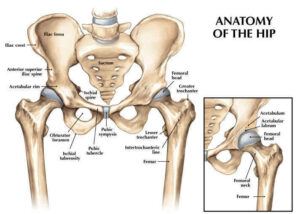Hip joint injection for pain relief
Our hip joint is a very important movement and load-bearing joint, so if there’s any conditions or injuries that affects your hip, it’s both unpleasant and painful.
Sometimes when the hip joint is so / too painful, a pain-relieving hip joint injection can be useful and effective (at least in the short run) to relieve pain almost immediately. Our patients usually say that the pain relief is nice, but it doesnt cure the issue entirely and the pain comes back.
That’s because it’s more of a symptomatic relief (kinda like taking panadol to relieve fever but it doesn’t solve what’s causing the fever).
Contents
The main purpose of hip joint injections
The first and foremost purpose is for pain relief, by injecting pain medicine directly into the painful joint itself. Other than pain relief (which is great), it can help with:
- diagnosing how severe the condition is
- provides some breathing space for normal function and more importantly, hip pain physiotherapy to build strength and stability to support the painful hip joint
Hip joint anatomy

Our hip joint is a ball-and-socket type of joint where the thigh bone connects to the pelvic bone via ligaments.
The top of the femur (the rounded head) fits into a concaved cavity that nicely fits the rounded head of the femur. This joint is one of the most important joints of the body that provides
- load bearing
- stability of spine
- strength of body
The rounded head is secured in the cavity socket by ligaments that collectively cushions and capsules around the joint. This same capsule also contains a naturally/bodily-made joint lubricant to keep the joint healthy and able to glide smoothly without pains.
Hip joint injection procedure
Normally the most accurate way of administering this injection is with guided imagery, usually
- live x-ray or
- imaging ultrasound
to increase the accuracy and effectiveness of the procedure (as well as of course, avoid causing unnecessary injuries or damage to nearby structures).
The procedure typically is like this:
- Start an IV line for hydration as well as easy application of medicines where necessary
- Patient will lie face down on x-ray table
- The skin over the hip joint will be cleaned and sanitised (hair shaved also if necessary)
- The doctor will number the injection skin with a numbing anesthetic medicine (localized injection – patient will typically feel a sting that may last for a number of seconds before the local numbness will set in)
- Then using the guided imaging device, the doctor will direct a small needle into the hip joint which will then inject a mixture of anti-inflammatory cortisone and anesthetia
Please note, on the day itself after the injection, rest. Do not do strenous activities such as weight lifting, running, hiking – just rest at home. At most very mild and easy going walks on flat surface.
Does it mean immediate pain after the jab?
The procedure itself is fairly quick, but the entire process can take up to an hour for the prep work itself.
So after the hip joint injection, our patients will typically continue to rest on the table for another 30 minutes until they are called by the doctor to turn over, sit up, stand and move around.
It’s mainly to try to stimulate and provoke the common pains that happen at the hip level.
Some patients get immediate relief, some others get their pain relief slowly, depending on how much of a hip joint issue they have and if it is a major pain contributor.
At times, patients may feel
- numbness
- weakness
- difficulty moving the hip
a few hours after the injection, typically due to the anesthesia.
Over a course of days and weeks, you’d have follow up with the doctors to keep track of your pains and progress to make sure all’s in order. You’d typically see a physio for hip physiotherapy at least once or twice a week as well to strengthen your hips, core and spine too.
Where To Next?
- Go to Home / Start
- Learn and find out more about your pains (bones, muscles, joints, tendons, ligaments, nerves etc) at Pain Conditions & Injuries
- Visit our shop to see products we recommend for pain relief, heating, treatments and more
- Contact us





